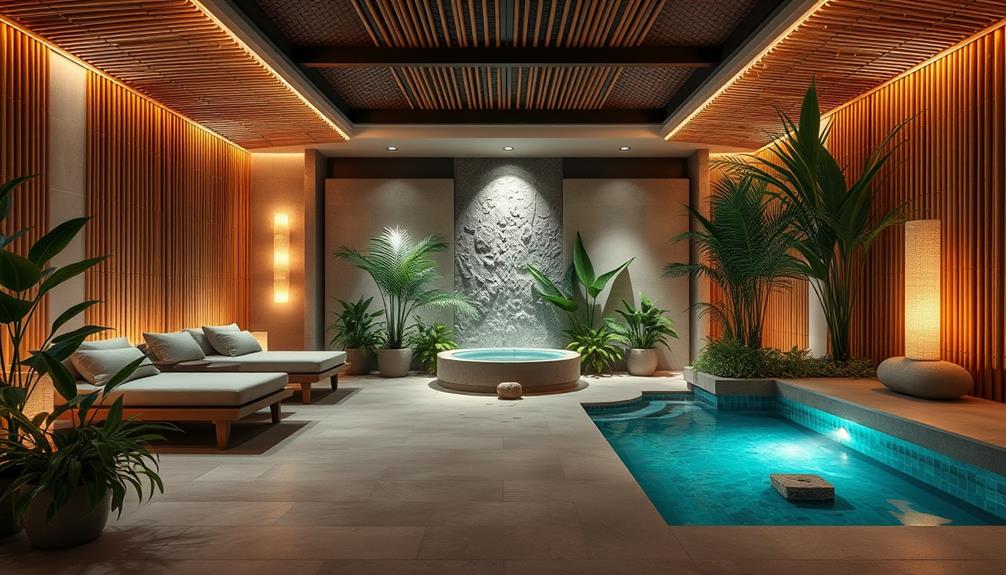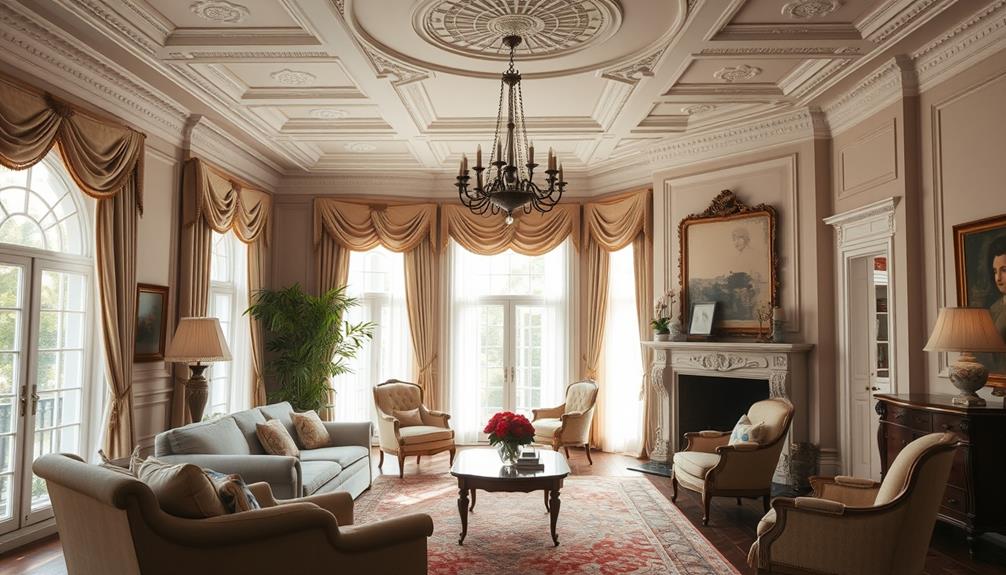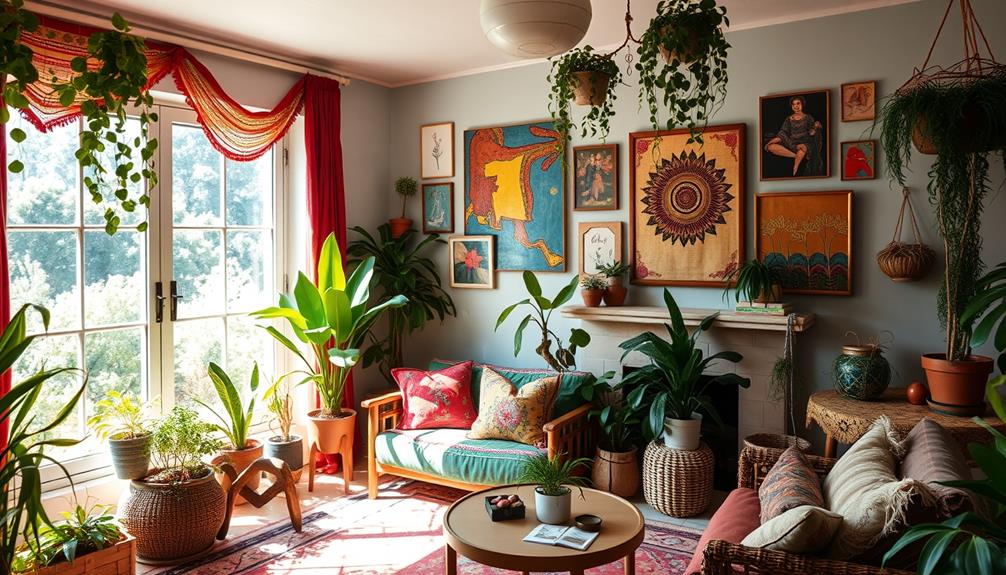You can transform your spa into a stunning oasis that captivates every guest. Start by blending natural elements like wood and stone with modern aesthetics for a serene ambiance. Carefully plan your layout to guarantee seamless flow from reception to treatment rooms, enhancing comfort and efficiency. Choose a calming color palette, using shades of blue and earthy tones to promote tranquility. Prioritize sustainable materials and fixtures that withstand humid conditions. Don't overlook natural light, as it creates an airy feel. By focusing on these aspects, you'll set the stage for an unforgettable spa experience. Discover more tips for enhancing your space!
Key Takeaways
- Incorporate natural materials like wood and stone to create a tranquil and inviting atmosphere that resonates with clients' preferences.
- Utilize mood boards to visualize design concepts, ensuring a harmonious blend of nature and modernity in your spa's aesthetic.
- Maximize natural light through windows and skylights to enhance the airy feel of the space, promoting relaxation for guests.
- Select calming color palettes, such as shades of blue and earthy tones, to evoke serenity and warmth throughout treatment areas.
- Ensure compliance with local regulations and health standards to create a safe and legally operational environment for clients and staff.
Design Concept and Aesthetics
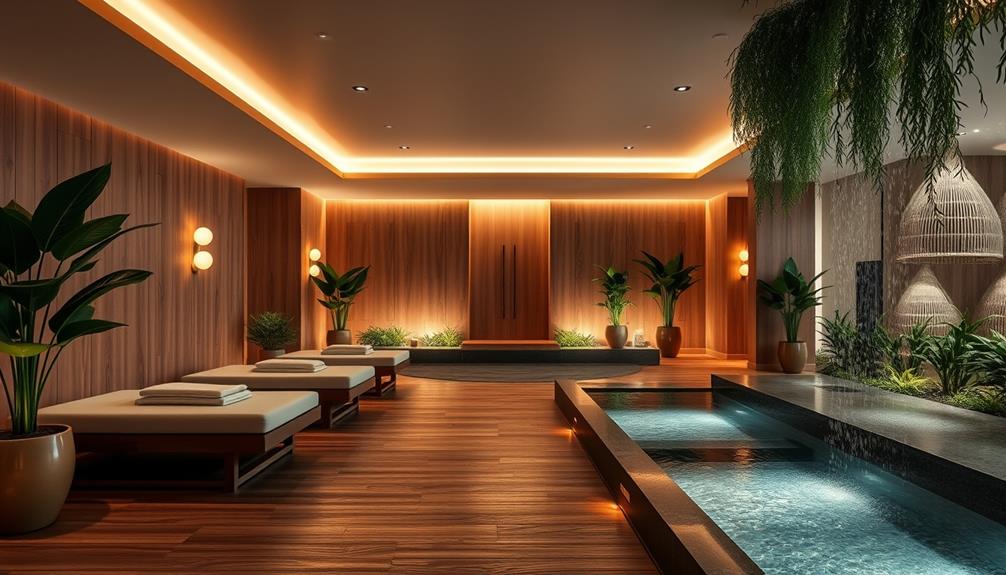
Emphasizing aesthetics and functionality, spa design creates a unique environment that resonates with client preferences.
To achieve this, consider incorporating mood boards essential for visualizing your design concepts. You'll want to fuse elements of nature with modernity, crafting a harmonious space.
Using natural materials like wood and stone can instill tranquility, while a calming color palette promotes relaxation. Keep the design simple and balanced; this approach enhances the rejuvenating experience.
Prioritize natural light, as it brightens the space and connects clients to the outdoors. Incorporate design elements that evoke serenity, like soft textures and gentle curves.
Remember, every choice you make should reflect your clients' desires, ensuring they feel welcomed and relaxed.
Planning Layout and Flow
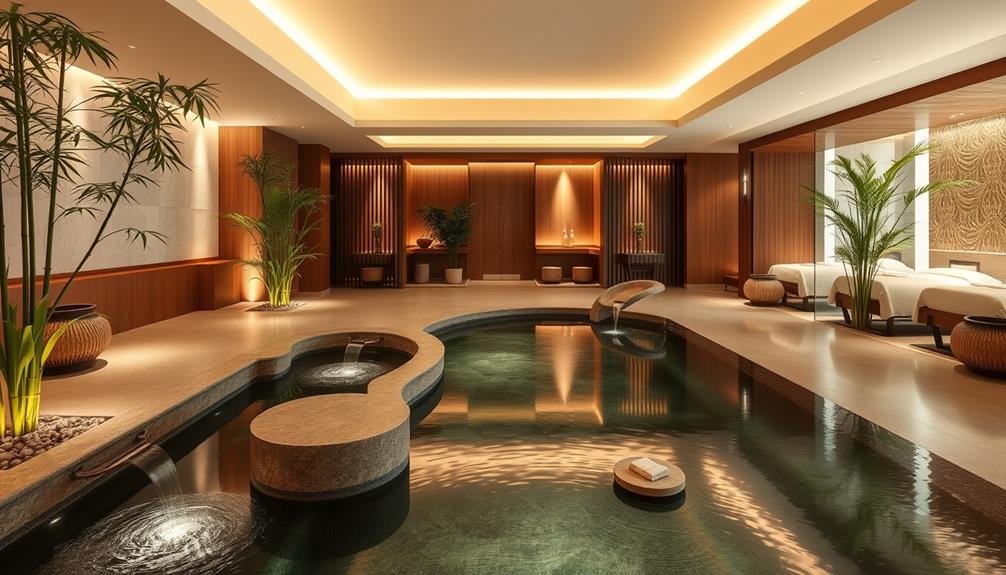
Creating a serene atmosphere goes beyond aesthetics; it involves thoughtful planning of the layout and flow within the spa. Start by evaluating your clients' needs to inform your design choices.
Optimize space utilization by strategically arranging key areas like reception, treatment rooms, relaxation zones, and wellness facilities, similar to how diverse tent camping locations in New England offer unique experiences. This creates a seamless flow that enhances guest movement and promotes tranquility.
Ascertain that functional elements, such as storage and seating, are integrated without disrupting the overall harmony. Remember, maximizing functionality while maintaining an inviting atmosphere is essential.
With careful planning, you'll create a spa experience that feels effortless and serene, allowing your guests to fully unwind and indulge in their treatments.
Material Selection and Finishes
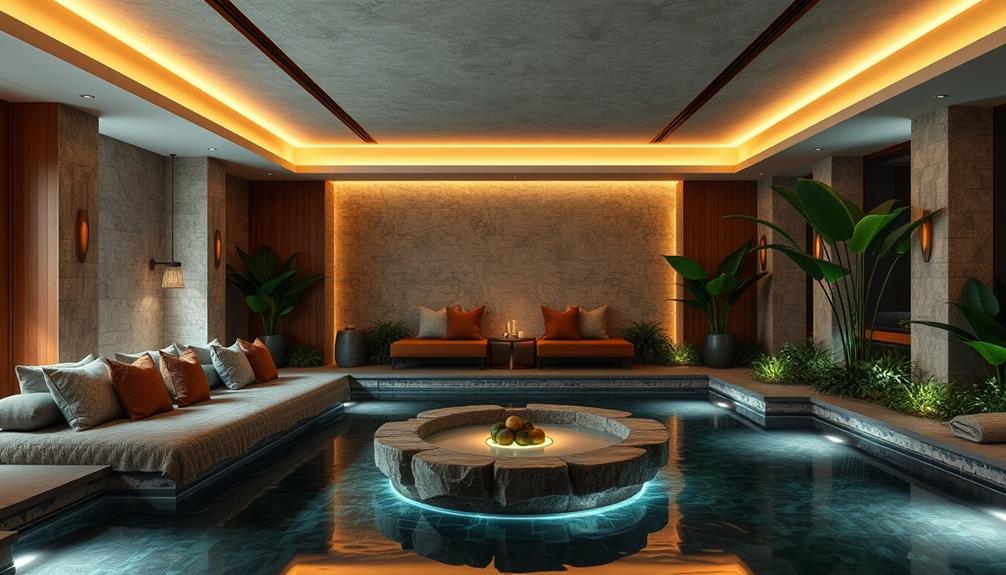
When selecting materials and finishes for your spa, prioritize sustainability and durability to enhance both aesthetics and functionality. Opt for natural stone and reclaimed wood to create a warm, inviting atmosphere. Choose moisture-resistant materials that can withstand high humidity levels while keeping maintenance easy. Consider finishes like textured walls or metallic accents that add visual interest without overwhelming the space.
| Material Type | Benefits |
|---|---|
| Natural Stone | Durable, moisture-resistant |
| Reclaimed Wood | Eco-friendly, unique appeal |
| Textured Walls | Adds depth, visually striking |
| Metallic Accents | Modern touch, eye-catching |
Lighting and Color Palette

The right lighting and color palette can transform your spa into a sanctuary of relaxation and rejuvenation.
Start by choosing calming shades of blue for treatment areas, which promote tranquility. Earthy tones like beige and taupe add warmth and grounding to your space. Incorporating elements of coffee culture can create a unique and inviting atmosphere for your clients.
Consider soft accents of pale lavender and muted green to enhance serenity. Maximize natural light through windows and skylights, creating an airy atmosphere. Incorporate indirect lighting to eliminate harsh shadows, and use candles for an intimate touch.
For versatility, install color-changing LED lights that allow you to customize moods based on the time of day or special events. Together, these elements will elevate your spa experience and foster a sense of peace for your clients.
Regulations and Compliance
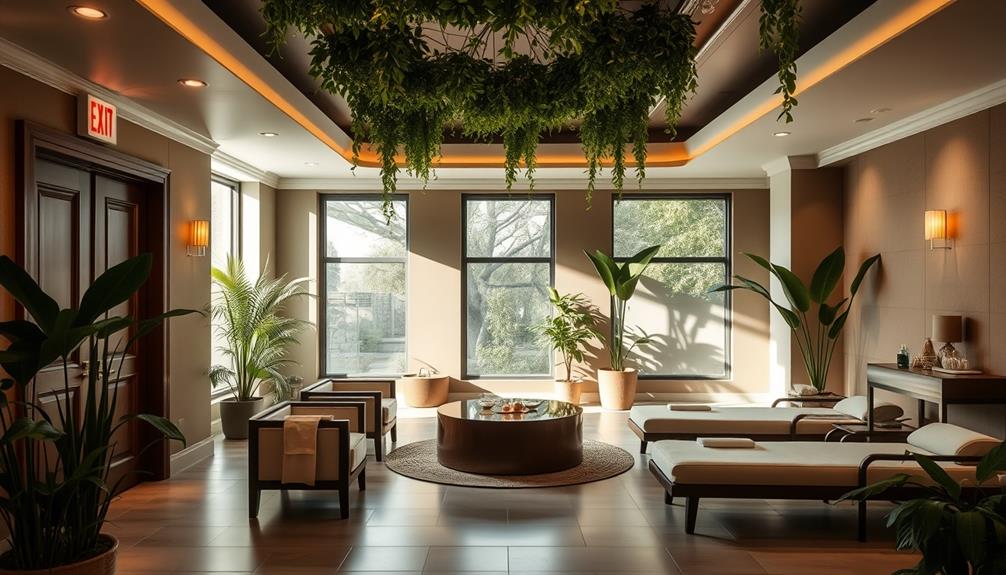
While crafting a serene environment with the right lighting and color palette greatly enhances the spa experience, understanding regulations and compliance is equally important to guarantee your spa operates smoothly and legally.
Start by identifying local zoning laws that govern spa construction. Make certain to obtain all necessary building permits before beginning your project.
Health and safety regulations are vital, so familiarize yourself with those requirements to protect both your clients and staff.
Don't forget to check licensing requirements for spa operations, as complying with these guarantees your business runs without legal hiccups.
Equipment Considerations
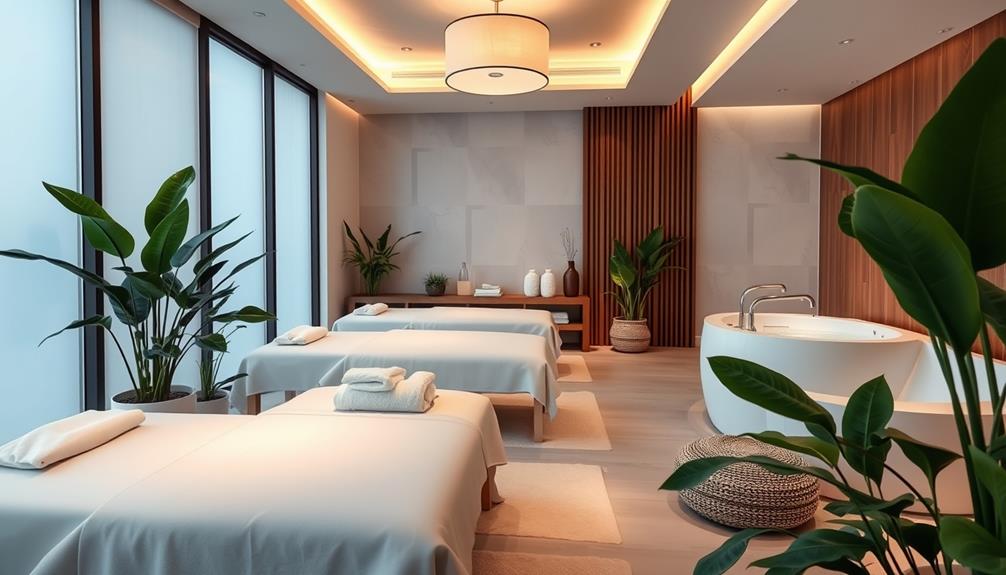
Selecting the right equipment is essential for creating an efficient and enjoyable spa experience.
You'll want to invest in high-quality tools and machines that enhance not only functionality but also the overall ambiance.
Here are a few key considerations:
- Massage Tables: Choose adjustable, comfortable tables that cater to various treatments and client preferences.
- Hydrotherapy Equipment: Consider jacuzzis and steam rooms that promote relaxation and rejuvenation, essential for a complete spa experience.
- Facial Machines: Invest in advanced devices that offer a range of facial treatments, ensuring clients receive the best care possible.
Common Design Mistakes
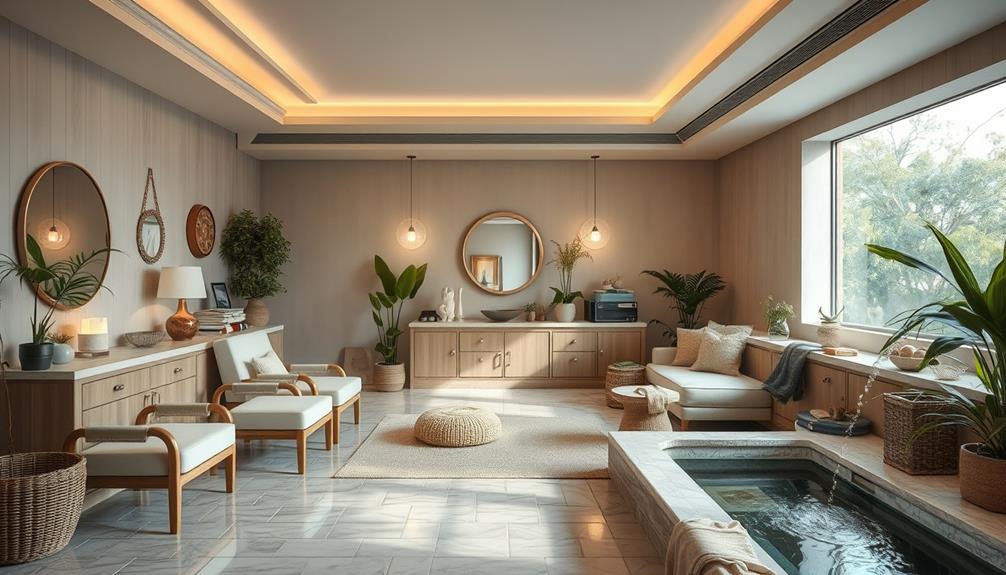
When designing a spa, overlooking common mistakes can greatly impact the guest experience and operational efficiency.
One critical error is neglecting natural lighting; it can diminish the ambiance and make your space feel cramped.
Failing to prioritize proper ventilation can lead to uncomfortable air quality, discouraging clients from returning.
Additionally, not soundproofing treatment rooms can disrupt relaxation, creating an unwelcoming atmosphere.
Make certain you align your design with operational needs; a poorly planned layout can hinder staff efficiency.
Finally, ignoring accessibility standards limits guest access and may alienate potential clients.
Frequently Asked Questions
How Can I Incorporate Local Culture Into Spa Design?
To incorporate local culture into your spa design, use regional materials, artwork, and symbols. Reflect community traditions in your layout and treatments, creating an authentic experience that resonates with both locals and visitors.
What Are the Best Plants for Spa Environments?
When you're creating a soothing oasis, consider plants like lavender, peace lilies, and bamboo. They breathe life into your space, purify the air, and offer a serene ambiance that gently whispers relaxation to your guests.
How Often Should Spa Interiors Be Updated?
You should update spa interiors every three to five years. This keeps the environment fresh and inviting, aligns with current trends, and maintains a serene atmosphere that enhances your clients' overall experience and satisfaction.
What Unique Features Can Enhance a Spa Experience?
Imagine stepping into a spa with a virtual reality relaxation room. Unique features like personalized aromatherapy, soundscapes, and outdoor meditation areas can truly enhance your experience, making each visit unforgettable and deeply rejuvenating.
How Do I Create a Signature Scent for My Spa?
To create a signature scent for your spa, blend essential oils like lavender, eucalyptus, and bergamot. Experiment with different ratios until you find a calming fragrance that resonates with your brand and enhances your guests' experience.
Conclusion
By thoughtfully blending aesthetics with functionality, you can truly transform your spa into a serene sanctuary. For instance, consider a spa that incorporated natural wood finishes and soft, earthy tones. Guests reported feeling instantly relaxed upon entering, thanks to the harmonious design. Remember, every detail counts—from layout to lighting. Avoid common pitfalls, and you'll create a lasting impression that keeps clients coming back for more. Your spa's stunning transformation is just a design choice away! To elevate the level of relaxation and luxury in your spa, consider incorporating elements such as plush seating, calming water features, and ambient music. These luxury spa designs can enhance the overall experience for your clients, leaving them feeling pampered and rejuvenated. With the right blend of aesthetics and functionality, your spa can become the ultimate serene sanctuary for clients to escape the stresses of everyday life.
